One of the first gemstones to be mined, turquoise has long been prized for its intense color, which varies from sky-blue to green, depending on the quantities of iron and copper within it. Turquoise is commonly found in microcrystalline, massive form, usually as encrustations, in veins, or as nodules. It is opaque to semi-translucent, light and very fragile, with conchoidal fracture. Some material is very porous, leading to fading and cracking, so it may be impregnated with wax or resin to maintain its appearance.
Sky blue turquoise from Iran is generally regarded as the most desirable; but in Tibet a greener variety is preferred. Localities in Mexico and United States produce a greener, more porous material that tends to fade more quickly. Other localities include the former USSR, Chile, Australia, Turkistan and Cornwall (England).
Turquoise has been thought to warn the wearer of danger or illness by changing color. It has been imitated by stained howlite, fossil bone or tooth, limestone, chalcedony, glass, and enamel. In 1972, an imitation turquoise was produced in France by Gilson.

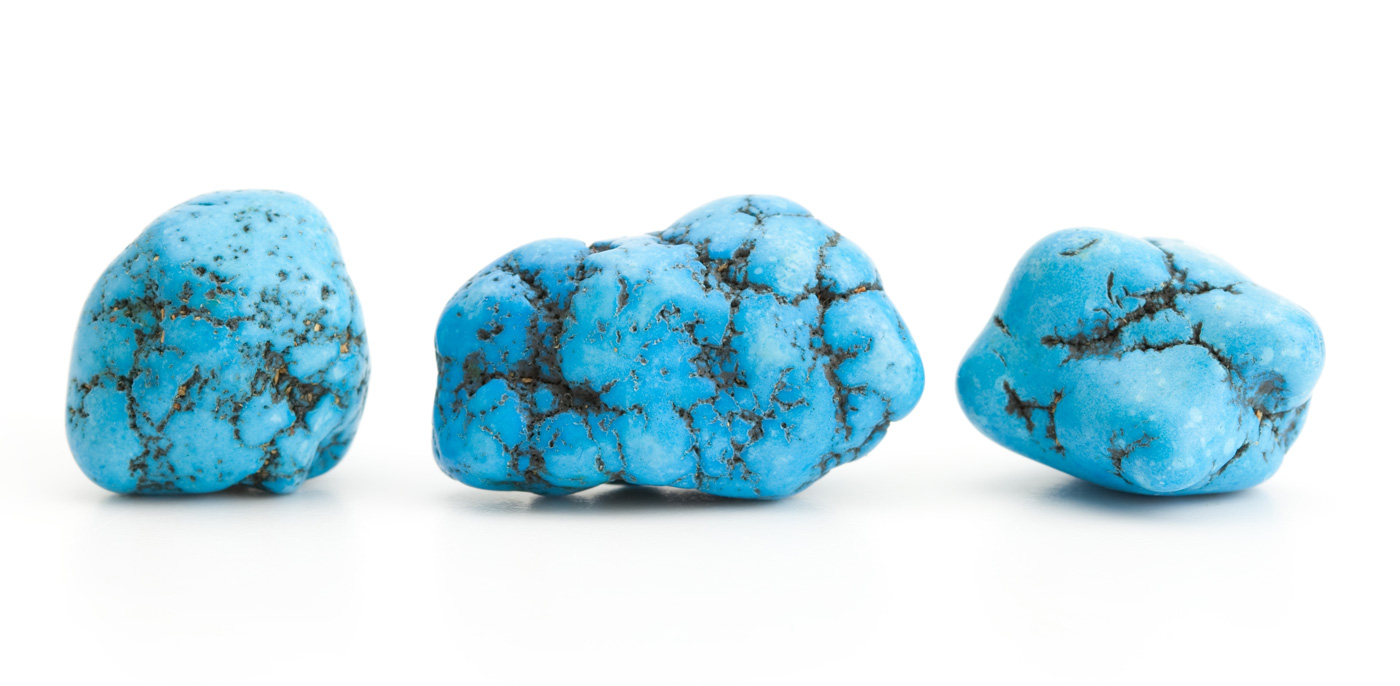
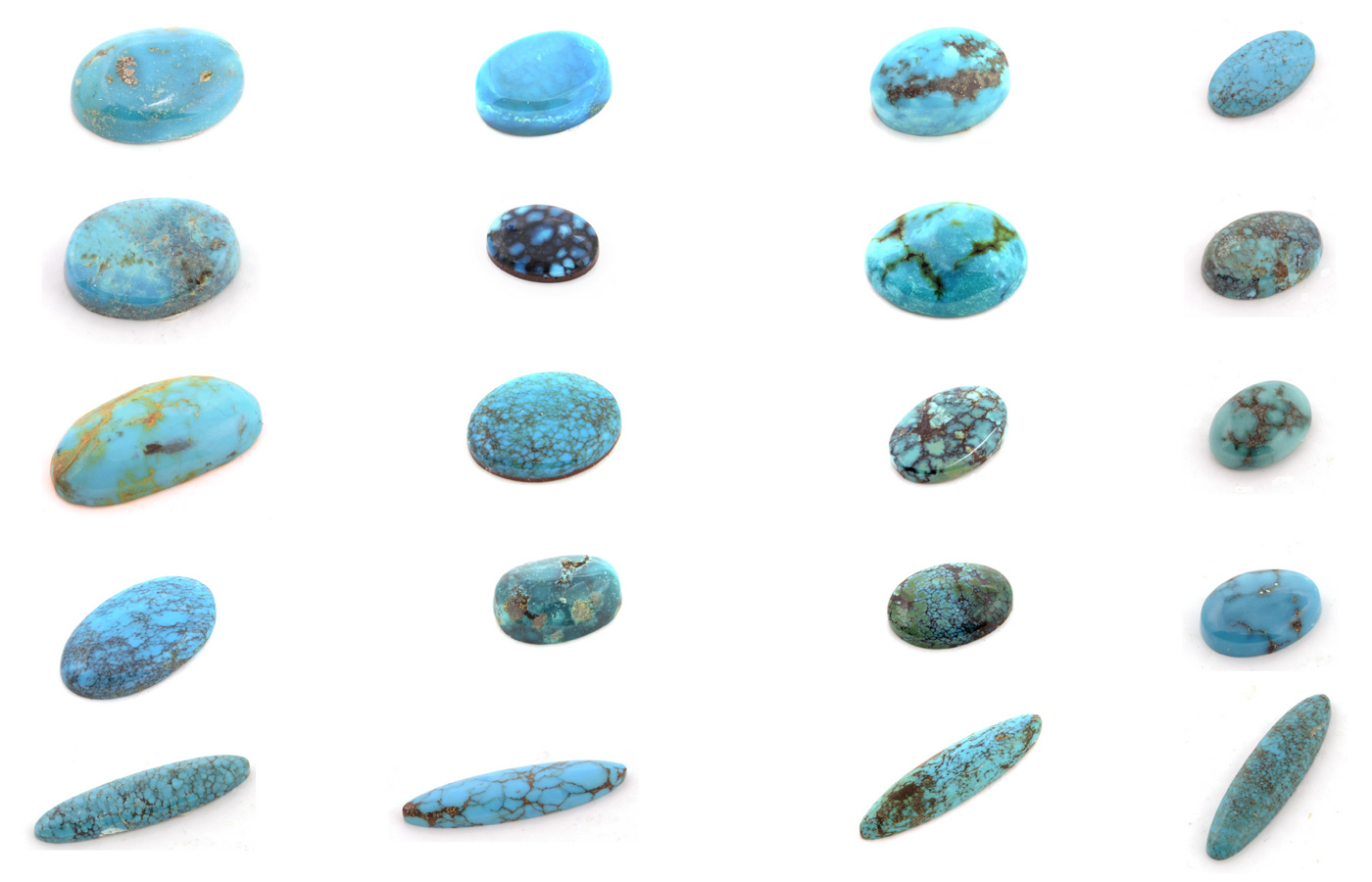
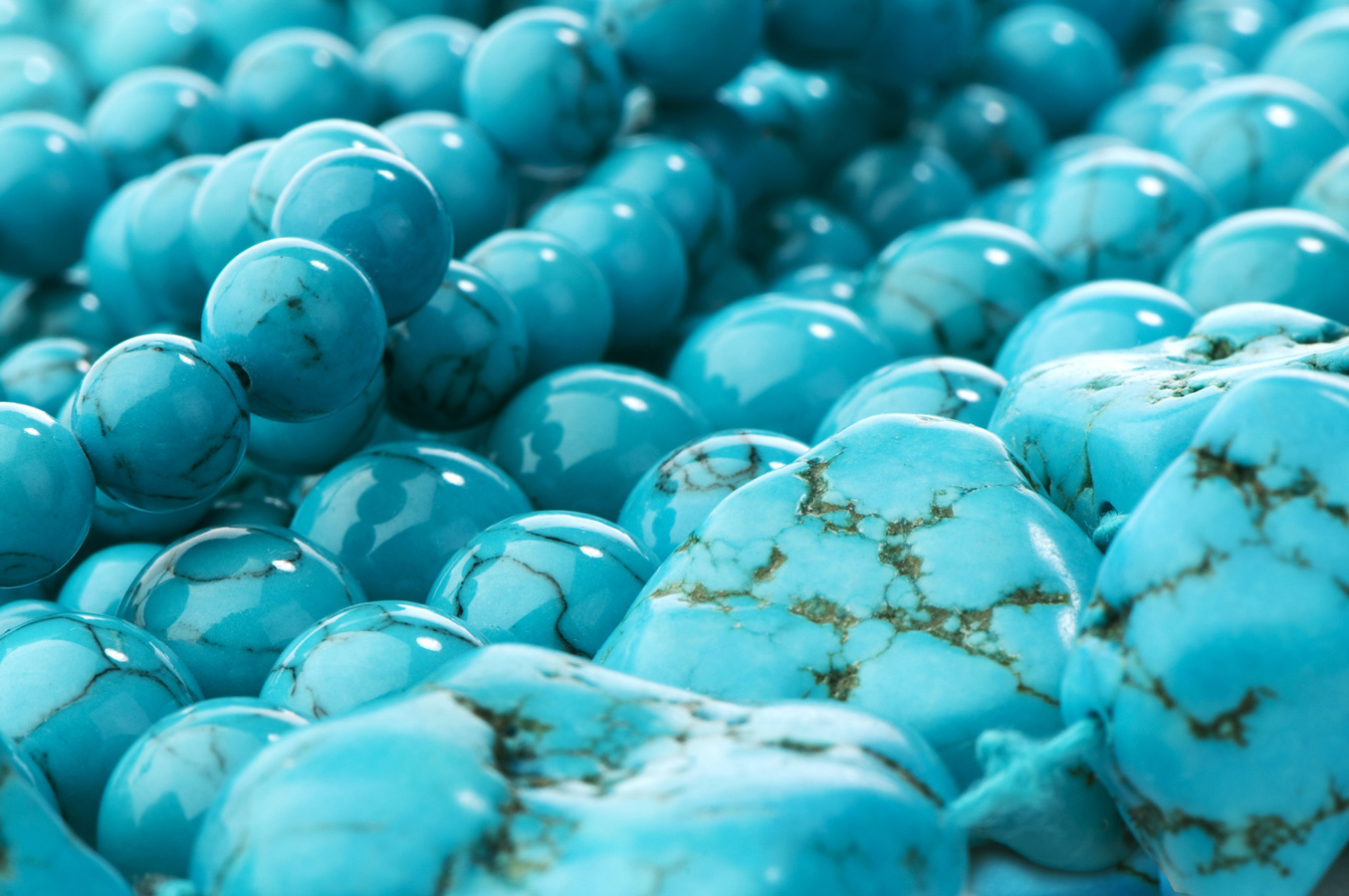
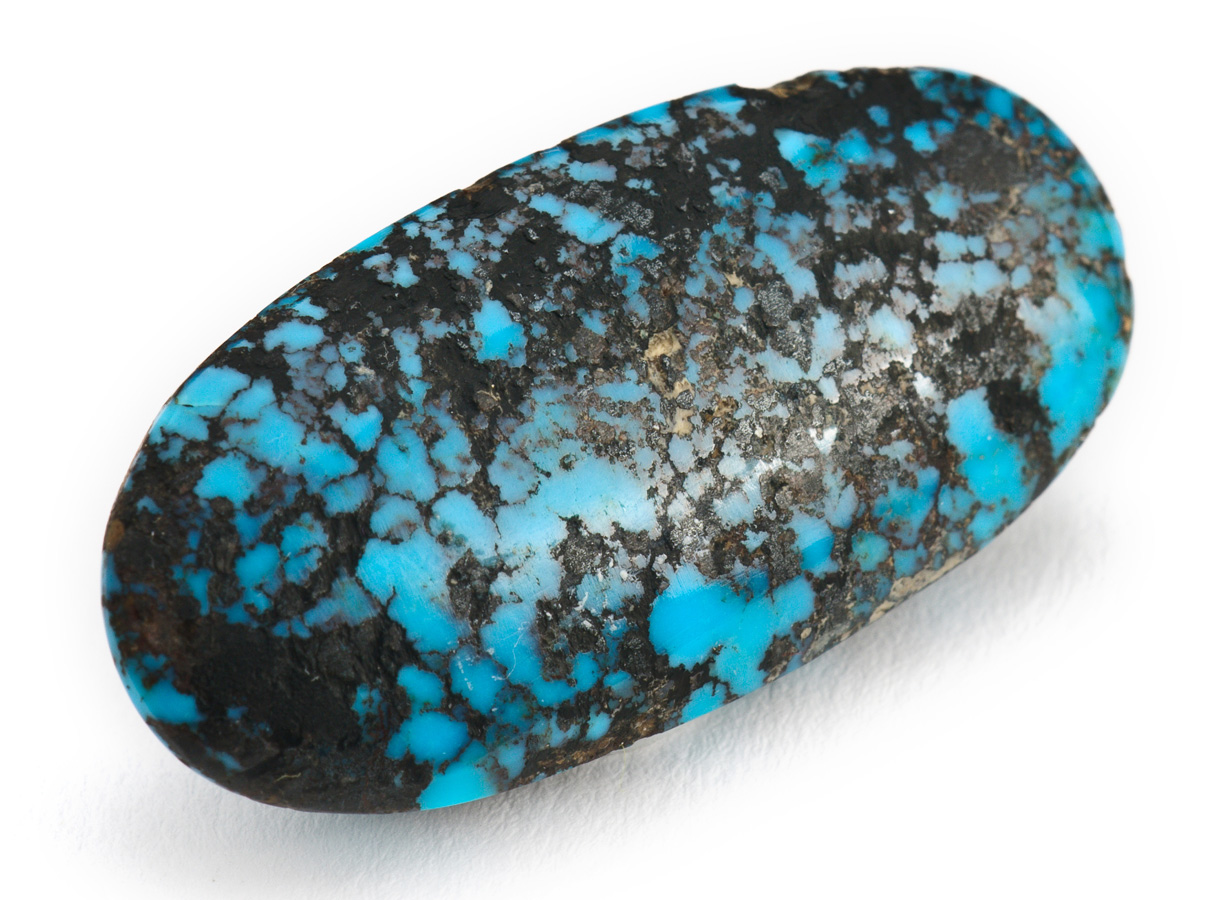

























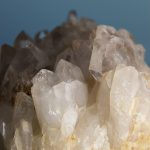
Leave a Reply
You must be logged in to post a comment.